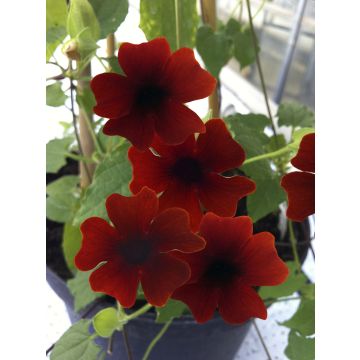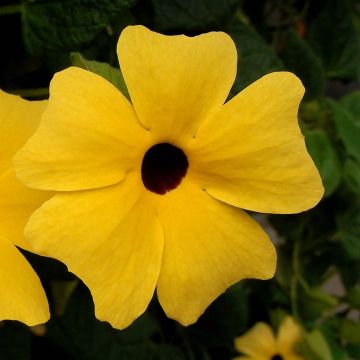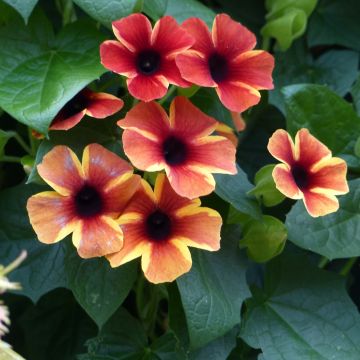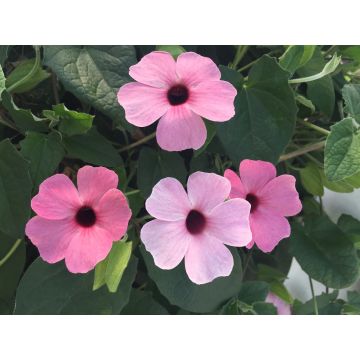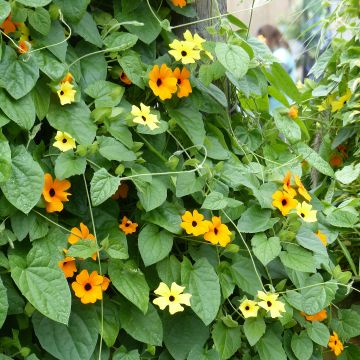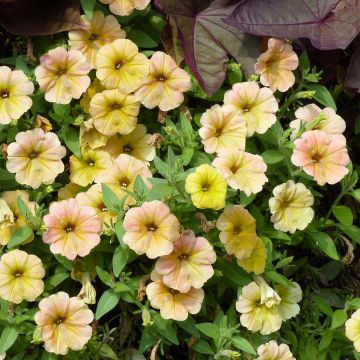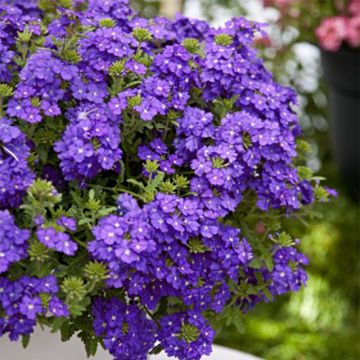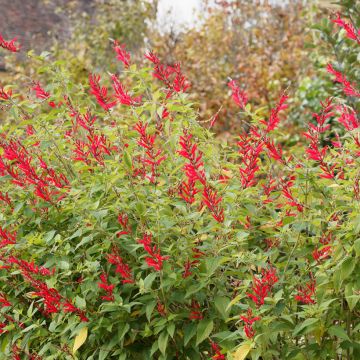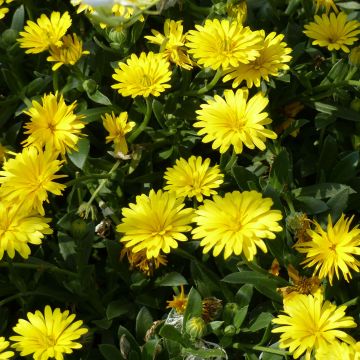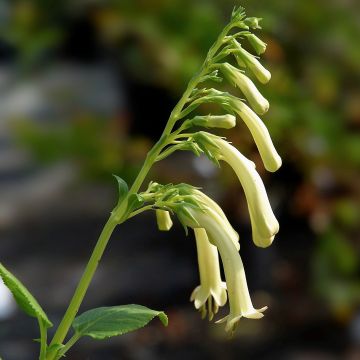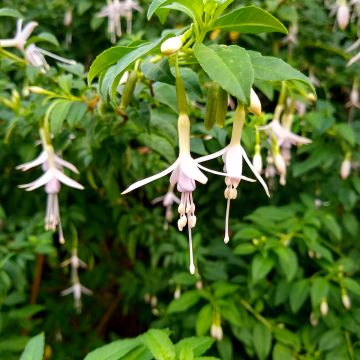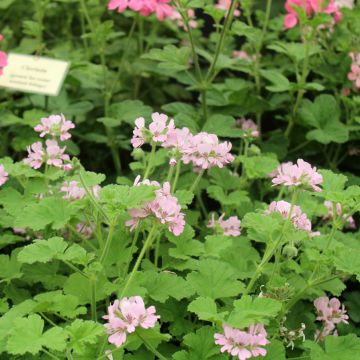Shipping country and language
Your country of residence may be:
Your country of residence is:
For a better user experience on our website, you can select:
Your shipping country:
-
Andorra
-
Austria
-
Belgium
-
Bulgaria
-
Canada
-
Chile
-
Croatia
-
Cyprus
-
Czechia
-
Denmark
-
Estonia
-
Finland
-
France
-
Germany
-
Greece
-
Hungary
-
Iceland
-
Ireland
-
Italy
-
Latvia
-
Lithuania
-
Luxembourg
-
Malta
-
Monaco
-
Netherlands
-
Poland
-
Portugal
-
Romania
-
Slovakia
-
Slovenia
-
Spain
-
Sweden
-
Switzerland
-
United Kingdom
We only deliver seed and bulb products to your country. If you add other products to your basket, they cannot be shipped.
Language:
-
French
-
German
-
Spanish
-
English
-
Italian
My Account
Hello
My wish lists
Log in / Register
Existing customer?
New customer?
Create an account to track your orders, access our customer service and, if you wish, make the most of our upcoming offers.
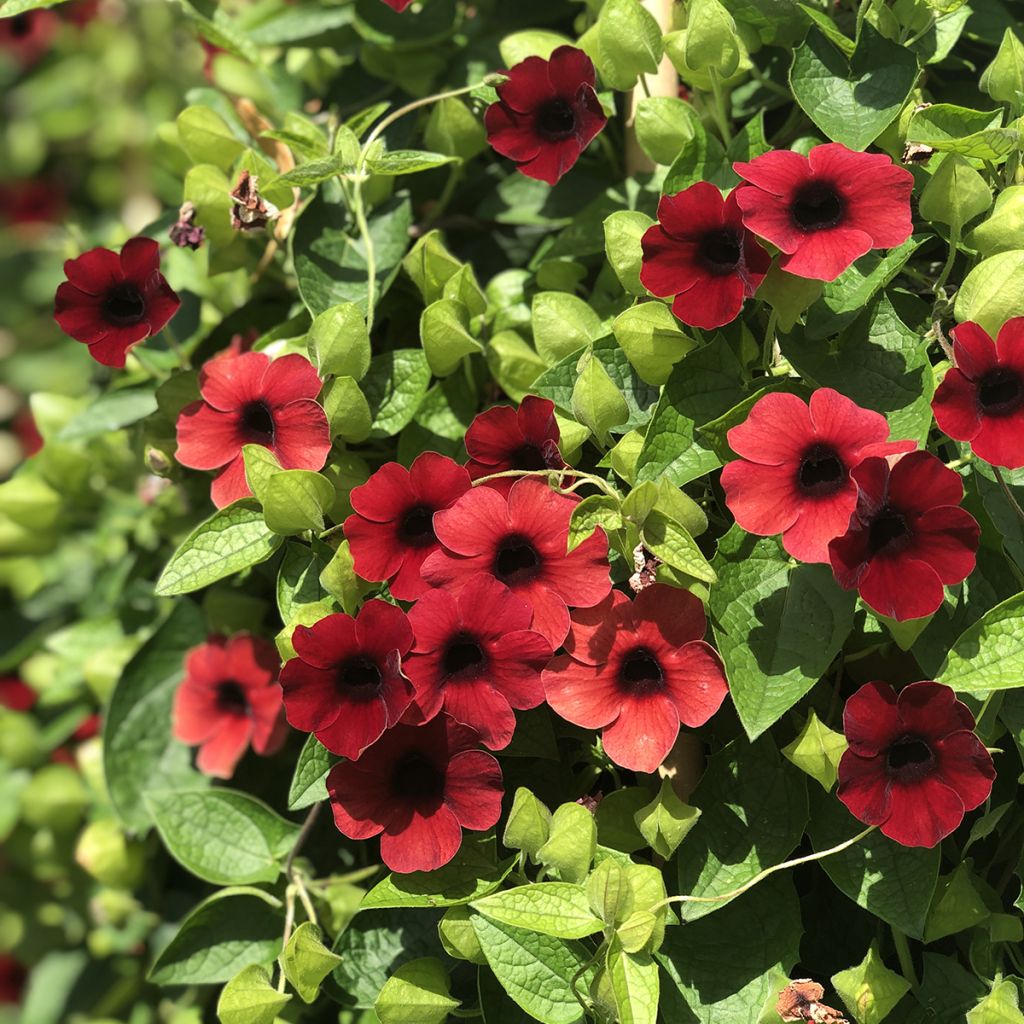

Thunbergia alata Sunny Suzy Cherry
Thunbergia alata Sunny Suzy Cherry
Thunbergia alata Sunny Suzy® Cherry®
Black-eyed Susan
Order in the next for dispatch today!
Dispatch by letter from €3.90.
Delivery charge from €5.90 Oversize package delivery charge from €6.90.
More information
This item is not available in your country.
Schedule delivery date,
and select date in basket
This plant carries a 6 months recovery warranty
More information
We guarantee the quality of our plants for a full growing cycle, and will replace at our expense any plant that fails to recover under normal climatic and planting conditions.
From €5.90 for pickup delivery and €6.90 for home delivery
Express home delivery from €8.90.
Does this plant fit my garden?
Set up your Plantfit profile →
Description
The Thunbergia alata 'Sunny Suzy Cherry' is another Black-eyed Susan from the 'Sunny Suzy' series that brings together early, floriferous varieties with various colours. With a moderate habit, 'Cherry' offers intense red flowers for almost 5 months that open around an almost black centre. Perennial in theory, it is an adorable annual climbing plant in our climates. Its stems covered with lush foliage cling to trellises on their own, allowing for the quick creation of large and decorative pots or stunning hanging baskets that can be kept in the conservatory. It appreciates heat and sunlight, fertile, moist, and well-drained soil.
The Thunbergia alata 'Sunny Suzy Cherry' is a fast-growing, perennial, and voluble climbing plant that tolerates only very light frosts (-3 °C (26.6°F)). The species is native to tropical regions of East Africa. It is grown as an annual in our climates. The cultivar 'Sunny Suzy Cherry' reaches an average height of 1.40 m (5ft) and a width of 50-60 cm (20-24in) in just a few months. Its stems twine around their support. They are adorned with lush, dark green foliage, consisting of evergreen (except in frost) and villous leaves with dentate edges, shaped like a heart or an arrow. The flowering, quite early for a Black-eyed Susan, extends from late May-early June to October. The 3-4 cm (1-2in) flowers, enclosed in a villous calyx, are borne on peduncles in the axil of the leaves. The corolla is tubular at the base and extends into five spreading lobes. The colour of the flowers slightly changes as they ripen, ranging from cherry red to a slightly more pinkish red. In the centre of this flower shines a beautiful, characteristic blackish-violet eye. Its role is to attract pollinating insects that visit the flowers with enthusiasm.
The 'Sunny Suzy Cherry' Black-eyed Susan is suitable for both container and open ground cultivation for seasonal decorations, in sunny locations. Climbing, voluble, and lightweight, it pairs well with all 'Sunny Suzy' Black-eyed Susans. It can also be planted next to a perennial climbing plant such as a herbaceous clematis. It can also be used as ground cover. You can associate it with summer-flowering bulbs, such as gladioli: it will twist around their leaves and bloom in the most unlikely places, adding a touch of whimsy to rigid flower beds. It will also make a great impact in a large hanging basket.
Note: Our plug plants are professional products intended for experienced gardeners: upon receipt, transplant and store them in shelter (conservatory, greenhouse, cold frame etc.) at a temperature above 14°C (57.2°F) for a few weeks before being planted outdoors once the risk of frost is definitively passed.
Report an error about the product description
Flowering
Foliage
Plant habit
Botanical data
Thunbergia
alata
Sunny Suzy® Cherry®
Acanthaceae
Black-eyed Susan
Cultivar or hybrid
Other Black-eyed Susans
Planting and care
You can plant your 'Sunny Suzy Cherry' Thunbergia alata in the ground or in a pot. If you plant them in the ground, it is imperative to wait until the last frost has passed (Thunbergia cannot tolerate frost and do not handle temperatures below 8° (46.4°F) well). In the meantime, you can prepare them in a pot in a warm and bright place to accelerate their growth.
Plant your Black-eyed Susan in a hot, sunny location. They need a light and humus-bearing soil and warmth. They tolerate short periods of drought fairly well, but will need regular watering during hot summer temperatures to flower well. In pots, they must be watered very regularly. Very floriferous and with rapid growth, they can reach 2m (7ft) in a single summer. Remember to provide support if you use them as climbing plants. Usually grown as annuals, they are actually very tender perennials: by bringing them indoors in September, you can extend their flowering into autumn and winter.
Planting period
Intended location
Care
This item has not been reviewed yet - be the first to leave a review about it.
Plug plants - Annuals
Haven't found what you were looking for?
Hardiness is the lowest winter temperature a plant can endure without suffering serious damage or even dying. However, hardiness is affected by location (a sheltered area, such as a patio), protection (winter cover) and soil type (hardiness is improved by well-drained soil).

Photo Sharing Terms & Conditions
In order to encourage gardeners to interact and share their experiences, Promesse de fleurs offers various media enabling content to be uploaded onto its Site - in particular via the ‘Photo sharing’ module.
The User agrees to refrain from:
- Posting any content that is illegal, prejudicial, insulting, racist, inciteful to hatred, revisionist, contrary to public decency, that infringes on privacy or on the privacy rights of third parties, in particular the publicity rights of persons and goods, intellectual property rights, or the right to privacy.
- Submitting content on behalf of a third party;
- Impersonate the identity of a third party and/or publish any personal information about a third party;
In general, the User undertakes to refrain from any unethical behaviour.
All Content (in particular text, comments, files, images, photos, videos, creative works, etc.), which may be subject to property or intellectual property rights, image or other private rights, shall remain the property of the User, subject to the limited rights granted by the terms of the licence granted by Promesse de fleurs as stated below. Users are at liberty to publish or not to publish such Content on the Site, notably via the ‘Photo Sharing’ facility, and accept that this Content shall be made public and freely accessible, notably on the Internet.
Users further acknowledge, undertake to have ,and guarantee that they hold all necessary rights and permissions to publish such material on the Site, in particular with regard to the legislation in force pertaining to any privacy, property, intellectual property, image, or contractual rights, or rights of any other nature. By publishing such Content on the Site, Users acknowledge accepting full liability as publishers of the Content within the meaning of the law, and grant Promesse de fleurs, free of charge, an inclusive, worldwide licence for the said Content for the entire duration of its publication, including all reproduction, representation, up/downloading, displaying, performing, transmission, and storage rights.
Users also grant permission for their name to be linked to the Content and accept that this link may not always be made available.
By engaging in posting material, Users consent to their Content becoming automatically accessible on the Internet, in particular on other sites and/or blogs and/or web pages of the Promesse de fleurs site, including in particular social pages and the Promesse de fleurs catalogue.
Users may secure the removal of entrusted content free of charge by issuing a simple request via our contact form.
The flowering period indicated on our website applies to countries and regions located in USDA zone 8 (France, the United Kingdom, Ireland, the Netherlands, etc.)
It will vary according to where you live:
- In zones 9 to 10 (Italy, Spain, Greece, etc.), flowering will occur about 2 to 4 weeks earlier.
- In zones 6 to 7 (Germany, Poland, Slovenia, and lower mountainous regions), flowering will be delayed by 2 to 3 weeks.
- In zone 5 (Central Europe, Scandinavia), blooming will be delayed by 3 to 5 weeks.
In temperate climates, pruning of spring-flowering shrubs (forsythia, spireas, etc.) should be done just after flowering.
Pruning of summer-flowering shrubs (Indian Lilac, Perovskia, etc.) can be done in winter or spring.
In cold regions as well as with frost-sensitive plants, avoid pruning too early when severe frosts may still occur.
The planting period indicated on our website applies to countries and regions located in USDA zone 8 (France, United Kingdom, Ireland, Netherlands).
It will vary according to where you live:
- In Mediterranean zones (Marseille, Madrid, Milan, etc.), autumn and winter are the best planting periods.
- In continental zones (Strasbourg, Munich, Vienna, etc.), delay planting by 2 to 3 weeks in spring and bring it forward by 2 to 4 weeks in autumn.
- In mountainous regions (the Alps, Pyrenees, Carpathians, etc.), it is best to plant in late spring (May-June) or late summer (August-September).
The harvesting period indicated on our website applies to countries and regions in USDA zone 8 (France, England, Ireland, the Netherlands).
In colder areas (Scandinavia, Poland, Austria...) fruit and vegetable harvests are likely to be delayed by 3-4 weeks.
In warmer areas (Italy, Spain, Greece, etc.), harvesting will probably take place earlier, depending on weather conditions.
The sowing periods indicated on our website apply to countries and regions within USDA Zone 8 (France, UK, Ireland, Netherlands).
In colder areas (Scandinavia, Poland, Austria...), delay any outdoor sowing by 3-4 weeks, or sow under glass.
In warmer climes (Italy, Spain, Greece, etc.), bring outdoor sowing forward by a few weeks.


